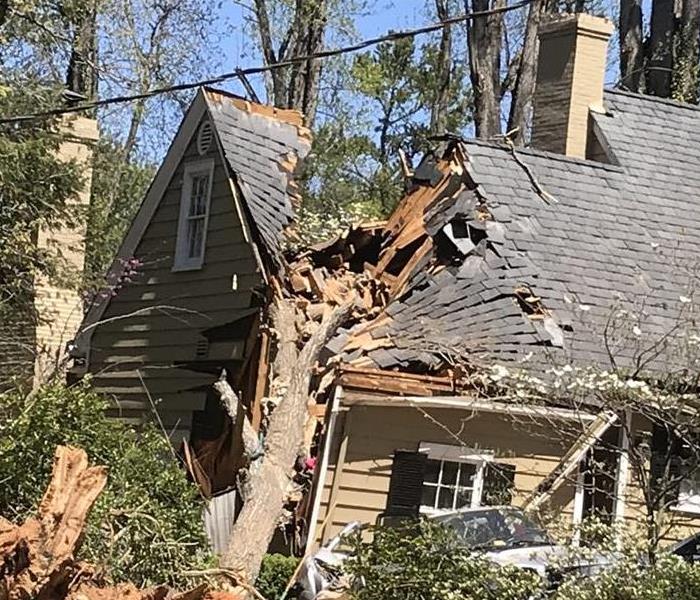Dealing With Trees Before and After a Storm
4/6/2022 (Permalink)
You know the phrase, “The bigger they are, the harder they fall”? In a literal sense, that is especially true for trees. During harsh storms, trees take a massive hit, and extreme winds can topple trees, which then cause damage to your home and property. To better protect your home, you need to start by protecting your trees.
Tree damage can cost homeowners thousands of dollars, and insurance will likely cover only a fraction of that damage. Taking the first steps to preventing that damage involves understanding the types of trees that surround your house, and the reasons why they might fall.
Unfortunately, all trees have the potential to fall over. This may be caused by wind, snow or ice, or a combination of those factors. Taller trees are more likely to get thrown down by winds, as more force is applied to the trunk with the increase in height. Also, roots can extend more than two times the radius of the branches, and not all environments allow this type of growth or development.
Also, trees with visible signs of damage or decay are even more likely to fall. If there is a tree leaning on your property, have you been able to notice an increase in its lean recently? Perhaps there are cracks in the stem. Maybe the roots are showing signs of decay. Some species of mushroom growing in the soil near trees also might indicate signs of decay.
Addressing these issues, as well as others, will help keep your tree standing. Protecting your trees also means keeping them healthy. You can help strengthen your trees by providing them with enough water and fertilizer. This becomes even more effective when you start these routines while the tree is still young.
Seasonal maintenance to your trees is essential, from the bottom to the top. Ensuring that the roots system is protected means that the tree has a solid anchor to the ground. Avoid construction or excavation around the tree and laying mulch will also help preserve nutrients and discourage weed growth.
Trimming the tree and pruning damages will not hurt the tree if done properly. In fact, with the right care you will help the tree fare much better in storms. Removing dead or weak branches ultimately boosts the growth of the tree and helps strengthen its structure. When shaping the tree correctly, it becomes more resistant to all types of weather damage.
However, once a storm passes and leaves a trail of tree damage in its wake, you will need to know a couple cleanup tips to keep the damage from getting worse. The most important thing to know is that if a tree has caused damage to power lines, you need to leave it be. In these cases, rely on the professionals to assess the severity of the damage, and allow them to repair or remove branches that put power lines in jeopardy.
Injured trees may also require the work of climbing or a chainsaw. Again, these situations need to be handled by licensed arborists, who are tree care professionals with the experience needed to remove or repair a tree.
Finally, you need to know what type of insurance coverage you have for your property, for both your home and your car. Not all insurances cover the same things, and the compensation might be different based on each circumstance.
When it comes to cleaning up the aftermath of a heavy storm, SERVPRO of South and Northwest Grand Rapids is here to help you recover as quickly as possible. For more information on protecting your home from tree damage, call SERVPRO of South and Northwest Grand Rapids today at (616) 662-9700. Our specialties include fire, water, and storm damage restoration for residential and commercial clients. We also do mold and mildew remediation and much more.




 24/7 Emergency Service
24/7 Emergency Service
